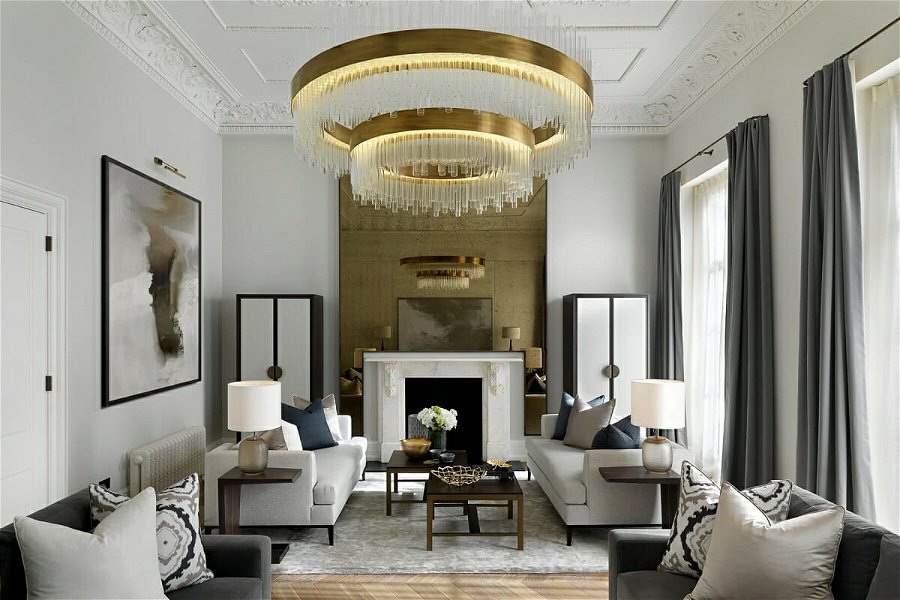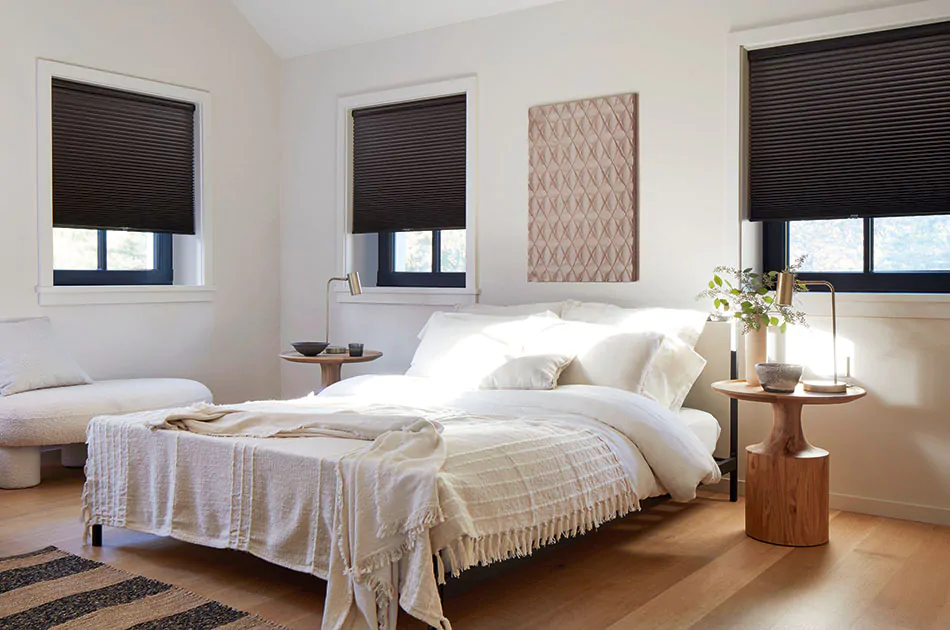Keep your windows looking fresh with regular Phoenix blinds repair and maintenance
The Ultimate Overview to Blinds: Kinds, Benefits, and Selecting the Right Fit for You
The globe of window therapies is huge and varied. Blinds come in various styles, each offering distinctive advantages for various setups. Recognizing these options is crucial for making informed decisions. Additionally, variables like product selection and room performance play a significant function. As one takes into consideration the excellent equilibrium in between aesthetic appeals and usefulness, the subtleties of measuring and preserving blinds likewise become crucial elements. What should one focus on when picking the ideal window solution?
Kinds of Blinds: An Extensive Review
Blinds function as both useful and aesthetic aspects in interior design, providing numerous choices to fit varied preferences and demands. Amongst the most popular types are Venetian blinds, characterized by straight slats that can be readjusted for light control and personal privacy. Roller blinds, known for their simpleness and adaptability, can be found in a series of patterns and materials, making them appropriate for contemporary and traditional settings. Upright blinds, typically used for bigger windows or gliding doors, enable easy change and are typically made from textile or vinyl.
Roman blinds, with their classy folds up, add a touch of elegance to any room, while cellular tones supply insulation and power efficiency. Furthermore, bamboo blinds use an all-natural, environment-friendly option, instilling rooms with heat. Each type has distinct features and designs, ensuring property owners can find the best fit for their specific design and practical needs.
Benefits of Installing Blinds in your house
The setup of blinds in a home offers a number of considerable benefits. They offer improved privacy control, allowing homeowners to manage presence from the exterior. Additionally, blinds add to energy efficiency by assisting to handle interior temperature levels, decreasing the dependence on heating and cooling systems.
Improved Personal Privacy Control
When homeowners seek to improve their home, setting up blinds provides a significant benefit in privacy control. Blinds offer a functional option for controling visibility from both the interior and outside of the home. By readjusting the slats or raising the blinds, individuals can easily take care of the amount of light getting in while all at once obstructing the sight from outdoors. This adaptability enables homeowners to develop a comfy atmosphere without giving up all-natural light. Additionally, different designs and materials are offered, ensuring that house owners can choose choices that perfectly blend with their style while enhancing personal privacy. Eventually, the installment of blinds acts as an efficient ways to secure personal space, motivating leisure and assurance within the home environment.
Power Efficiency Enhancement
Mounting blinds not only enhances personal privacy yet also significantly adds to power effectiveness in the home. By regulating all-natural light and reducing warm transfer, blinds can aid maintain a consistent interior temperature level. During warmer months, shutting blinds can shut out excessive sunshine, thereby lowering the dependence on a/c. Conversely, in cooler months, they can offer insulation by trapping heat, reducing heating costs. Additionally, energy-efficient blinds, such as cellular shades, are created particularly to lessen energy loss. By buying top quality blinds, property owners can develop a much more comfortable living atmosphere while likewise decreasing energy expenses. Ultimately, the setup of blinds offers as a practical solution for those looking for to improve both convenience and power efficiency in their homes.
Just how to Choose the Right Blinds for each and every Space
Just how can one figure out one of the most ideal blinds for each space in a home? The option procedure begins with evaluating the space's objective and atmosphere. For example, in living areas, flexible blinds that enable light control while guaranteeing personal privacy are optimal. In bed rooms, power outage blinds can boost sleep quality by blocking out outside light.
Bathroom and kitchens call for moisture-resistant choices to hold up against humidity, making vinyl or synthetic timber blinds suitable choices. In addition, the wanted visual plays a vital duty; collaborating blinds with the area's decor enhances the total ambiance.
Think about the amount of natural light each area gets; lighter blinds may be better for dark areas, while darker options can add heat to sunlit areas. Eventually, recognizing certain requirements and preferences for performance and design will certainly lead house owners in making informed decisions tailored per area's special needs.
Material Options: Wood, Plastic, Textile, and Much more

Wood Blinds Advantages
Wood blinds are a prominent option among homeowners seeking a mix of looks and functionality. One substantial advantage of wood blinds is their natural appeal, providing a warm and inviting appearance that enhances any interior design. They are readily available in different coatings and shades, enabling customization to match individual design. Additionally, timber blinds give exceptional light control and personal privacy, as their slats can be conveniently adapted to filter sunlight while maintaining seclusion. Their durability is an additional advantage; with proper care, timber blinds can last for years without shedding their charm (Phoenix plantation shutters). Additionally, they have shielding buildings, assisting to control interior temperatures and possibly decreasing power costs. On the whole, timber blinds merge beauty and practicality, making them a suitable choice for numerous houses
Plastic Resilience Features
Plastic blinds stand out for their extraordinary toughness, making them a sensible option for numerous settings. These blinds are resistant to wetness, making them perfect for locations such as shower rooms and kitchen areas where moisture can be a concern. Unlike timber, plastic does not warp, split, or discolor under sunshine, guaranteeing resilient efficiency and very little upkeep. Additionally, they are offered in a range of colors and styles, permitting home owners to customize their look without giving up resilience. Plastic blinds are additionally easy to clean; an easy clean with a damp cloth is frequently sufficient to maintain them looking fresh. On the whole, their resilience and low maintenance make vinyl a favored alternative amongst property owners seeking both performance and aesthetic allure.

Textile Options Overview
Blinds come in a variety of textile alternatives that deal with different visual and practical requirements. Common products consist of vinyl, timber, and material, each offering one-of-a-kind advantages. Wood blinds offer a traditional, warm visual and superb insulation yet need maintenance to stop warping. Vinyl blinds are long lasting and moisture-resistant, making them suitable for high-humidity locations like kitchens and washrooms. Textile blinds, readily available in various shades and patterns, wooden blinds provide versatility and gentleness, enhancing home style while supplying differing levels of light purification. Furthermore, options like faux timber supply the appearance of all-natural wood with added sturdiness. When selecting blinds, it is crucial to examine the details requirements of each room to assure peak performance and design.
Gauging and Mounting Blinds: Tips for Success
Gauging and installing blinds may appear straightforward, cautious focus to information is vital for accomplishing an ideal fit. Initially, it is important to determine the home window structure accurately, noting both the size and elevation. For within places, deduct a percentage from the size to guarantee a tidy fit, while outdoors installs need to extend beyond the framework for far better light control and visual appeals. Making use of a steel tape action is advised for precision.
When installing, collect all necessary devices, such as a degree, drill, and screws. Complying with the maker's instructions is important to assure proper installment. It is advisable to pre-drill openings to stop harming the braces. Additionally, having a 2nd individual can make the process smoother, particularly when lifting larger blinds. Finally, after installment, examination Find Out More the blinds to verify they operate efficiently and readjust as required for optimum performance.
Maintenance and Treatment for Long-Lasting Blinds
Correct maintenance and treatment can significantly expand the life expectancy of window coverings. Routine dusting is essential; using a soft cloth or a microfiber duster can effectively remove dirt without scraping surface areas. For much deeper cleaning, a mild service of soap and water is advised, used with a soft sponge, guaranteeing that no dampness seeps right into the systems.
For material blinds, spot cleansing is suggested, while wooden blinds must be treated with a wood-safe cleaner to preserve their finish. Prevent exposing callous too much wetness, warmth, or direct sunshine, which can cause bending or fading.
Additionally, regular inspection of systems and cables can prevent damage. It's smart to comply with supplier guidelines for certain materials, as various blinds may have special treatment requirements. By adopting these straightforward maintenance methods, property owners can assure their blinds remain useful and cosmetically pleasing for many years to come.
Regularly Asked Inquiries
Can Blinds Assist Reduce Energy Costs in My Home?
Blinds can properly lower energy prices in a home by providing insulation, obstructing warm throughout summer, and maintaining warmth in wintertime. Their capacity to regulate light and air circulation enhances power efficiency throughout the year.
Exist Child-Safe Options for Blinds?
Yes, there are child-safe options for blinds. These include cordless designs, retractable cords, and security gadgets that eliminate dangling cords, ensuring a secure environment for kids while keeping functionality and aesthetic appeal in homes.

Exactly How Do Blinds Contrast to Tones or curtains?
Blinds usually use a lot more specific light control and space efficiency than shades or drapes. Phoenix shades installation. They are frequently simpler to keep and clean up, while drapes provide a softer visual, and tones can offer differing insulation benefits
Can I Customize the Shade and Style of My Blinds?
Yes, blinds can be customized in both design and color. Numerous producers provide a large range of alternatives, enabling consumers to pick products, patterns, and tones that fit their personal visual and home design.
What Is the Ordinary Life Expectancy of Different Kinds Of Blinds?
The ordinary life expectancy of blinds differs: wood blinds last 5-10 years, fake timber 7-10 years, light weight aluminum 5-10 years, and textile tones around 5 years, relying on direct exposure, use, and upkeep to sunlight.
Washrooms and kitchens need moisture-resistant choices to withstand moisture, making plastic or synthetic timber blinds ideal options. Wood blinds provide all-natural elegance and heat, while vinyl gives toughness and convenience of maintenance. One significant benefit of wood blinds is their natural charm, providing a warm and inviting appearance that improves any interior design. Furthermore, wood blinds give excellent light control and privacy, as their slats can be easily readjusted to filter window shades sunshine while keeping seclusion. For fabric blinds, area cleaning is a good idea, while wood blinds must be treated with a wood-safe cleaner to keep their finish.